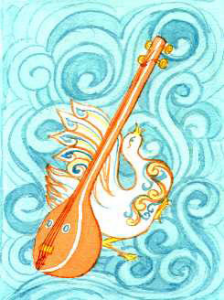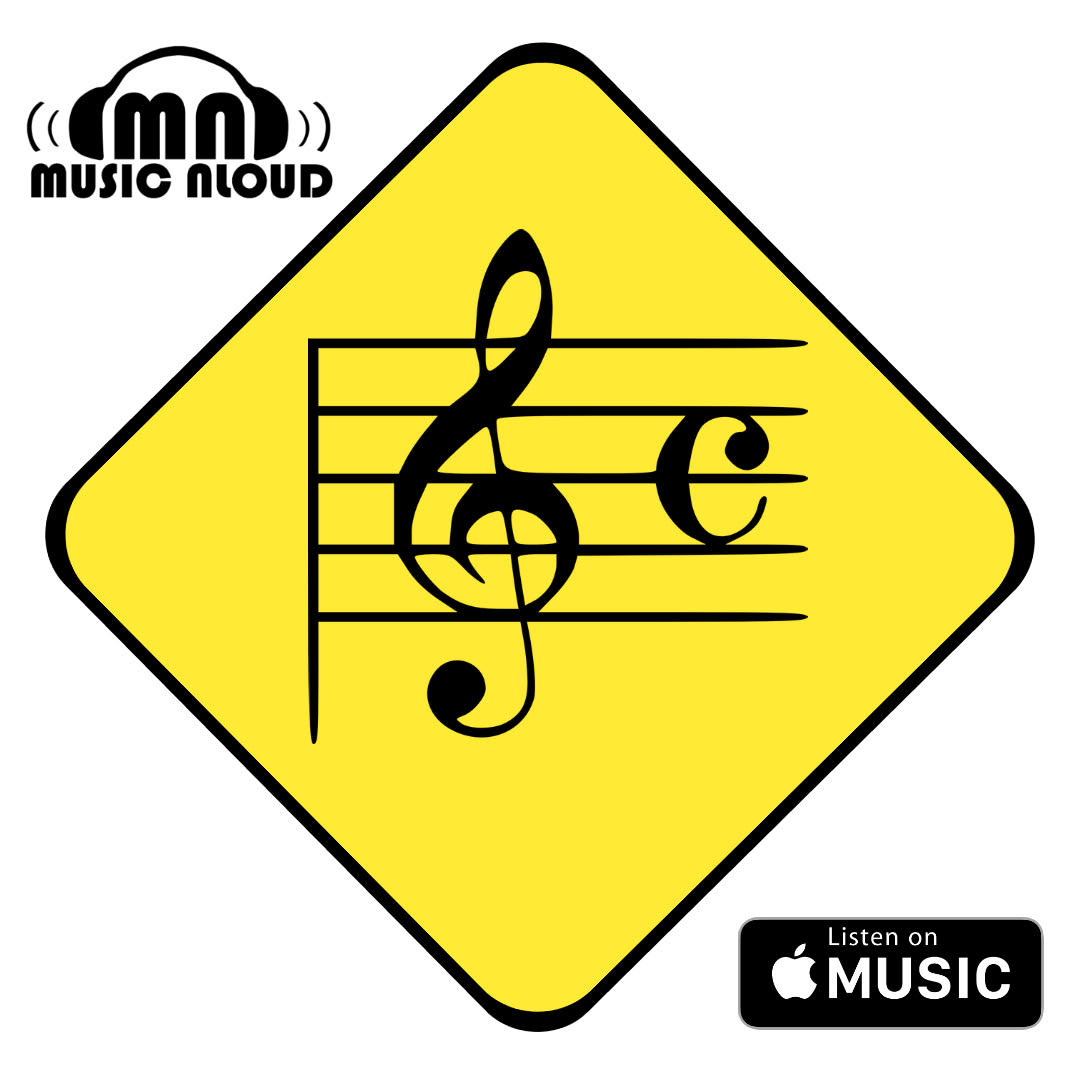Ajay Parasuraman
Firstly, apologies to all. After an extremely grueling 3 weeks at work, my zest for writing just flickered back on. Let bygones be that. I have just gotten back from a K.S Gopalakrishnan flute-kutcheri at Rasikapriya, Cochin. The review of that can wait. Possibly, forever 🙂
I write this next post as I listen to a Saketh Raman concert very recently downloaded. If you remember right, the last post introduced you to the origins of the two forms, viz a viz, Carnatic and Hindustani. This one will involve the terms involved in both the forms.
You must all be familiar with the Saptaswaras, lit. Seven notes — Sa, Ri, Ga, Ma, Pa, Dha, and Ni. A raaga is a combination of all or some of the swaras. A raaga will have an aarohana or ascent, and an avarohana or descent. The various combinations of the swaras is what gives each raaga it’s distinct identity. Any song, be it in Carnatic or Hindustani, will have a tune. It is based on the raaga of the song that a tune is composed. Most or all of the terms in Carnatic have their similar sounding counterparts in Hindustani as well.
In Carnatic, a raaga is divided into two — Janaka (or Parent) raaga and Janya (or Child) raaga. A Janaka raaga is also called a Melakartha raaga and will have all the seven notes, in order, in it’s ascent and descent. A Janya raaga is one that has evolved from a Melakartha raaga and, as you must have guessed, will not involve all the seven notes. In other words, a subset of a Melakartha raaga will give you a Janya raaga, and innumerable ‘children’ are possible from any given Melakartha raaga. In Hindustani, the thaat is the equivalent to the Melakartha in Carnatic. However the classifications in each of the forms differ from each other. In Carnatic, there are 72 Melakartha raagas, to Hindustani’s 10 thaats.
The 72 Melakartha raagas each have a number associated with them — this number against a raaga is assigned based on the katapayaadi sankhya. In this nomenclature, the digits corresponding to the first two syllables of the name of a raga, when reversed, give the index of the raga. Thus the scale of a melakarta raga can be easily derived from its name. The katapayadi sankhya is a simplification of Aryabhatta‘s Sanskrit numerals. The numbers associated with each of the syllables are given below:
|
1 |
2 |
3 |
4 |
5 |
6 |
7 |
8 |
9 |
0 |
|
|
Kadi Nava |
ka |
kha |
ga |
gha |
nga |
ca |
cha |
ja |
jha |
nya |
|
Tadi Nava |
á¹a |
á¹ha |
á¸a |
á¸ha |
ṇa |
ta |
tha |
da |
dha |
na |
|
Padi Pancha |
pa |
pha |
ba |
bha |
ma |
|||||
|
Yadi Ashta |
ya |
ra |
la |
va |
śha |
sha |
sa |
ha |
कटपयादि संखà¥à¤¯à¤¾
|
१ |
२ |
३ |
४ |
५ |
६ |
ॠ|
८ |
९ |
० |
|
|
कादि नव |
क |
ख |
ग |
घ |
ङ |
च |
छ |
ज |
ठ|
ञ |
|
टादि नव |
ट |
ठ|
ड |
ढ |
ण |
त |
थ |
द |
ध |
न |
|
पादि पंच |
प |
फ |
ब |
ठ|
म |
|||||
|
यादि अषà¥à¤Ÿ |
य |
र |
ल |
व |
श |
ष |
स |
ह |
Note that the name katapayadi comes from the contents of the first row in either of the tables formulated by Aryabhatta. Let’s see if an example simplifies the use of the Table(s) – Take Natakapriya. The first two syllables in the name are Naa and Ta. Going by the table, we get 0 and 1 as the corresponding numbers. Now, taking the reverse, we get 10. Hence, Natakapriya has been given the number 10 in the Melakartha list based on this scheme of numbering. Now, that you’ve learnt how to assign numbers to melakartha raagas, next post will be about the classification of raagas within the list of 72 Melakarthas and also the categorization of different raagas in the Hindustani system.
Hope this has been worth your time. Until next time, cheerio!
I write this next post as I listen to a Saketh Raman concert very recently downloaded. If you remember right, the last post introduced you to the origins of the two forms, viz a viz, Carnatic and Hindustani. This one will involve the terms involved in both the forms.
You must all be familiar with the Saptaswaras, lit. Seven notes — Sa, Ri, Ga, Ma, Pa, Dha, and Ni. A raaga is a combination of all or some of the swaras. A raaga will have an aarohana or ascent, and an avarohana or descent. The various combinations of the swaras is what gives each raaga it’s distinct identity. Any song, be it in Carnatic or Hindustani, will have a tune. It is based on the raaga of the song that a tune is composed. Most or all of the terms in Carnatic have their similar sounding counterparts in Hindustani as well.
In Carnatic, a raaga is divided into two — Janaka (or Parent) raaga and Janya (or Child) raaga. A Janaka raaga is also called a Melakartha raaga and will have all the seven notes, in order, in it’s ascent and descent. A Janya raaga is one that has evolved from a Melakartha raaga and, as you must have guessed, will not involve all the seven notes. In other words, a subset of a Melakartha raaga will give you a Janya raaga, and innumerable ‘children’ are possible from any given Melakartha raaga. In Hindustani, the thaat is the equivalent to the Melakartha in Carnatic. However the classifications in each of the forms differ from each other. In Carnatic, there are 72 Melakartha raagas, to Hindustani’s 10 thaats.
The 72 Melakartha raagas each have a number associated with them — this number against a raaga is assigned based on the katapayaadi sankhya. In this nomenclature, the digits corresponding to the first two syllables of the name of a raga, when reversed, give the index of the raga. Thus the scale of a melakarta raga can be easily derived from its name. The katapayadi sankhya is a simplification of Aryabhatta‘s Sanskrit numerals. The numbers associated with each of the syllables are given below:
| 1 | 2 | 3 | 4 | 5 | 6 | 7 | 8 | |||||
| Kadi nava | ka | kha | ga | gha | nga | ca | cha | ja | nya | |||
| Tadi nava | á¹a | á¹ha | á¸a | á¸ha | ṇa | ta | tha | da | na | |||
| Padi pancha | pa | pha | ba | bha | ma | |||||||
| Yadi ashta | ya | ra | la | va | śha | sha | sa | ha |
कटपयादि संखà¥à¤¯à¤¾
| १ | २ | ३ | ४ | ५ | ६ | ॠ| ८ | ९ | ० | |
| कादि नव | क | ख | ग | घ | ङ | च | छ | ज | ठ| ञ |
| टादि नव | ट | ठ| ड | ढ | ण | त | थ | द | ध | न |
| पादि पंच | प | फ | ब | ठ| म | |||||
| यादि अषà¥à¤Ÿ | य | र | ल | व | श | ष | स | ह |
Note that the name katapayadi comes from the contents of the first row in either of the tables formulated by Aryabhatta. Let’s see if an example simplifies the use of the Table(s) – Take Natakapriya. The first two syllables in the name are Naa and Ta. Going by the table, we get 0 and 1 as the corresponding numbers. Now, taking the reverse, we get 10. Hence, Natakapriya has been given the number 10 in the Melakartha list based on this scheme of numbering. Now, that you’ve learnt how to assign numbers to melakartha raagas, next post will be about the classification of raagas within the list of 72 Melakarthas.
Hope this has been worth your time. Until next time, cheerio!




